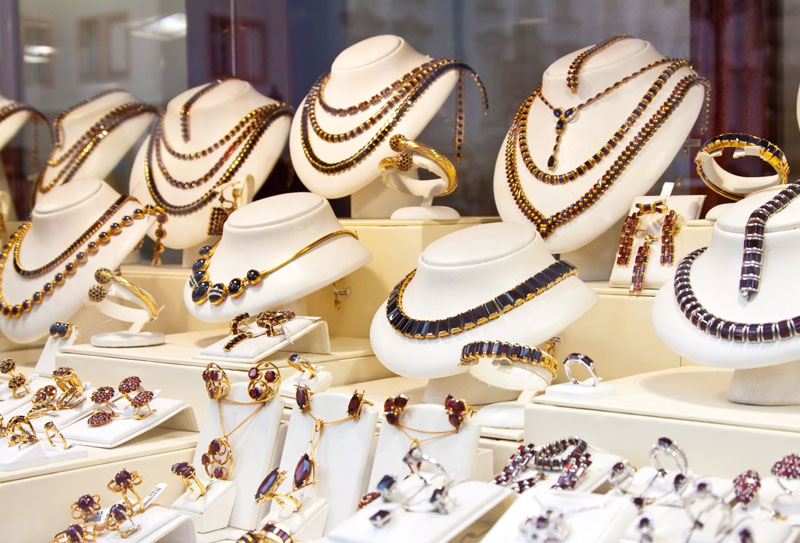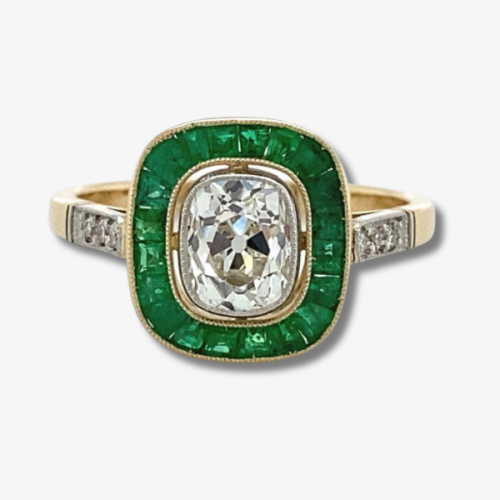Uncover the Rich History Behind Stunning Estate Jewelry Collections
The exploration of estate precious jewelry collections uses an one-of-a-kind home window into history, revealing the elaborate relationship in between workmanship and social development (estate jewelry austin). Each item is not merely a testament however an accessory to the creative activities and social worths of its time, from the luxuriant information of the Victorian period to the structured elegance of the Mid-Century Modern. As we check out these remarkable artefacts, we uncover stories that go beyond generations, motivating us to consider not just their appeal, yet the lives they have touched and the minutes they have actually experienced. What tricks might these collections still hold?
The Origins of Estate Jewelry
Just how did estate jewelry concerned embody the rich history and artistry of past eras? The origins of estate jewelry can be traced back to numerous durations of workmanship, where fashion jewelry was not simply a device but a representation of societal values, technical developments, and creative expressions. Each piece tells a tale, commonly related to the lives of their previous owners, encapsulating personal stories together with historic contexts.
The term "estate fashion jewelry" commonly refers to secondhand items, typically from substantial periods such as Victorian, Art Nouveau, or Art Deco. These items were created with precise interest to detail, showcasing the skill of craftsmens that made use of materials like gold, silver, and valuable gemstones. Unlike modern fashion jewelry, estate items usually include special layouts that highlight the appearances of their time, hence functioning as concrete links to the past.

Notable Style Ages
Throughout history, numerous noteworthy style eras have considerably influenced the evolution of estate fashion jewelry, each identified by unique styles, products, and social contexts. The Georgian age (1714-1837) marked the beginning of detailed styles, typically featuring nature-inspired themes and making use of materials like gold, silver, and gemstones embeded in elaborate setups. Following this, the Victorian age (1837-1901) presented charming motifs, with emotional jewelry and innovative techniques such as the usage of enamel and cameos.
The Art Nouveau period (1890-1910) commemorated organic types and the beauty of nature, making use of materials like opals and pearls in flowing layouts. This was done well by the Art Deco period (1920-1939), which welcomed geometric patterns, bold colors, and luxurious products such as platinum and rubies, reflecting the modernist spirit of the moment.
The Mid-Century Modern period (1940-1960) showcased streamlined layouts and using unusual products, emphasizing minimalism and performance. Each of these periods not just mirrors the creative activities of their time however also encapsulates the social worths and technical improvements that shaped jewelry layout, making them a remarkable subject for historians and enthusiasts alike.

Famous Estate Jewelry Collections
The abundant background of estate jewelry is wonderfully exemplified by a number of distinguished collections my latest blog post that showcase the virtuosity and craftsmanship from various design periods. Among one of the most popular is the Cartier Collection, which shows the deluxe and advancement of the renowned French jeweler. Pieces from this collection usually include intricate designs and charming gemstones, highlighting the brand's commitment to fine workmanship.
One more notable collection is the Lady of Windsor's precious jewelry collection, which consists of several distinctive pieces, consisting of the iconic "Windsor" arm band. This collection not just exhibits the sophistication of the Art Deco duration yet likewise lugs an abundant story of love and loss, as it came from Wallis Simpson, who notoriously wed Edward VIII.
The collection of the late actress Elizabeth Taylor additionally sticks out in the realm of estate precious jewelry. With countless items developed by distinguished jewelers like Bulgari and Cartier, her collection embodies glamour and refinement, emphasizing her individual design and fondness for distinct gemstones.
These popular estate jewelry collections work as a testament to the long-lasting attraction of great precious jewelry, providing understanding right into the artistic and social motions that formed their creation.
The Cultural Value
Estate fashion jewelry collections hold visit homepage extensive social importance, reflecting not just the visual values of their particular periods yet also the historical and social contexts in which they were produced. Each item frequently embodies the craftsmanship and artistic fads of its time, showcasing the advancement of layout and technology in fashion jewelry production.
Furthermore, these collections act as tangible web links to social customs and routines. As an example, wedding bands and click here now antique brooches may represent love and familial bonds, while items adorned with certain gems can represent cultural or local identities. The materials made use of-- whether gold, silver, or gemstones-- often tell tales of profession, exploration, and the riches buildup of societies.
Furthermore, estate fashion jewelry can function as historical artifacts, supplying understandings into the lives of individuals and the societal standards they browsed. The means jewelry was used and valued can expose much concerning sex functions, condition, and individual expression within varying social landscapes. Estate fashion jewelry transcends simple decoration, acting as a rich narrative of human experience, creativity, and cultural heritage, inviting contemporary audiences to engage with the past in a meaningful way.
Taking Care Of Your Estate Parts
Caring for estate jewelry items needs a thoughtful method to guarantee their durability and protect their distinct characteristics. Constantly clean estate jewelry making use of a soft, lint-free fabric after each wear to remove oils and dust.
Storage is equally vital; store items individually in a fabric-lined box to avoid tangling and damaging. Consider using anti-tarnish bags or cloths for silver things, as this helps to reduce the tainting procedure. Furthermore, stay clear of subjecting jewelry to extreme moisture, extreme temperature levels, or direct sunshine, which can negatively influence metals and gems.
Regular assessments are essential. Examine for loose stones, used clasps, or damaged setups, and seek expert repairs when needed. Consulting a jewelry expert experienced in vintage or antique pieces can supply customized care choices. By implementing these methods, enthusiasts can preserve their estate fashion jewelry's historic and aesthetic worth, making certain these pieces remain to be valued for generations ahead.
Final Thought
In final thought, the expedition of estate precious jewelry collections discloses a tapestry of artistic expression and cultural importance, showing the worths and aesthetics of various historical periods. When had them, each item serves as a testament to extraordinary workmanship and the narratives of those who. Understanding the origins, design eras, and notable collections boosts admiration for these artefacts, stressing their function in protecting cultural heritage and encouraging ongoing stewardship and look after these impressive prizes.
The exploration of estate jewelry collections provides an unique window right into history, revealing the intricate relationship in between craftsmanship and cultural advancement. The beginnings of estate fashion jewelry can be traced back to numerous durations of craftsmanship, where jewelry was not just a device but a representation of social values, technical improvements, and creative expressions.The term "estate jewelry" commonly refers to previously owned pieces, often from substantial eras such as Victorian, Art Nouveau, or Art Deco.The abundant history of estate precious jewelry is magnificently exemplified by numerous popular collections that display the creativity and workmanship from numerous design periods.In conclusion, the expedition of estate fashion jewelry collections discloses a tapestry of creative expression and social importance, mirroring the values and aesthetics of different historic periods.